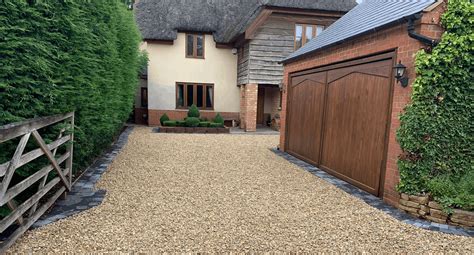From Bumpy to Beautiful: Leveling Your Gravel Driveway
A gravel driveway offers a rustic charm and cost-effectiveness that many homeowners appreciate. However, over time, the shifting of gravel, the impact of vehicle traffic, and the forces of nature can leave your once-smooth driveway looking bumpy and uneven. This not only detracts from the aesthetic appeal of your property but can also damage your vehicles and make access difficult. Leveling your gravel driveway is a manageable DIY project that can significantly improve its appearance and functionality. This guide will walk you through the process, addressing common questions and concerns.
Why is My Gravel Driveway So Uneven?
Several factors contribute to an uneven gravel driveway. Understanding these factors is crucial for effective leveling.
- Vehicle Traffic: The constant weight and movement of vehicles compact the gravel in certain areas, causing dips and ruts to form. Heavier vehicles exacerbate this problem.
- Weather: Freezing and thawing cycles can shift the gravel, creating uneven surfaces. Water runoff can also erode the gravel, leading to low spots.
- Lack of Base: An inadequate base layer beneath the gravel is a common culprit. Without a stable foundation, the gravel will settle unevenly over time.
- Insufficient Gravel Depth: A shallow layer of gravel is more prone to shifting and unevenness than a deeper one.
How Do I Level My Gravel Driveway?
Leveling your gravel driveway involves several steps:
1. Assess the Damage: Walk the length of your driveway, noting the high and low points. Identify areas with significant dips or ruts that require attention. Consider using a long level or a laser level for a more precise assessment.
2. Gather Your Supplies: You’ll need the following:
- Gravel: Choose gravel similar in size and type to your existing gravel.
- Leveling Tool: A rake, landscape rake, or a box grader can be used. For larger driveways, a grader blade attached to a tractor might be necessary.
- Wheelbarrow or Cart: For transporting gravel.
- Shovel or Spade: For moving and spreading gravel.
- Water Source: A hose or watering can for compacting the gravel.
- Compactor (Optional): A plate compactor or hand tamper will provide a more professional finish.
3. Remove Excess Gravel: In areas that are too high, carefully remove excess gravel using a shovel. Dispose of the removed gravel responsibly.
4. Add Gravel to Low Areas: Spread the new gravel evenly into the low spots, using your leveling tool to distribute it. Work in small sections to ensure even distribution.
5. Compact the Gravel: Once you’ve filled in the low areas, compact the gravel using a compactor, a water source (for natural compaction), or a combination of both. This is crucial for preventing future settling. Repeat steps 4 and 5 until the driveway is level.
6. Final Grading: Use your leveling tool for a final grading, ensuring a smooth and even surface.
7. Maintenance: Regular maintenance is key to keeping your driveway level. This includes adding more gravel to areas that settle over time and regrading as needed.
What is the Best Type of Gravel for a Driveway?
The ideal gravel for a driveway depends on several factors, including the climate, the amount of traffic, and your personal preferences. However, some common choices include:
- Crushed Stone: Durable and affordable, but can be sharp.
- River Rock: Rounded and smooth, aesthetically pleasing, but may not compact as well.
- Pea Gravel: Smaller stones that are good for lighter traffic areas.
Consult with a local landscaping supply company to determine the best type of gravel for your specific needs.
How Much Gravel Do I Need?
The amount of gravel you need depends on the size of your driveway and the depth of the gravel layer. Consult with a local supplier, providing them with your driveway's dimensions and desired depth. They can calculate the precise amount needed.
Can I Level My Gravel Driveway Myself?
Yes, leveling a gravel driveway is a feasible DIY project for many homeowners. However, for very large or uneven driveways, it might be advisable to hire a professional.
How Often Should I Level My Gravel Driveway?
The frequency of leveling depends on various factors like traffic, weather conditions, and initial gravel depth. However, many homeowners find that leveling is needed every 1-3 years, or even more often depending on how heavily the driveway is used. Regular maintenance, including adding gravel to low areas, should help prolong the time between major leveling projects.
This comprehensive guide empowers you to transform your bumpy gravel driveway into a beautiful, functional asset to your property. Remember, proper planning and execution are essential for achieving long-lasting results.

